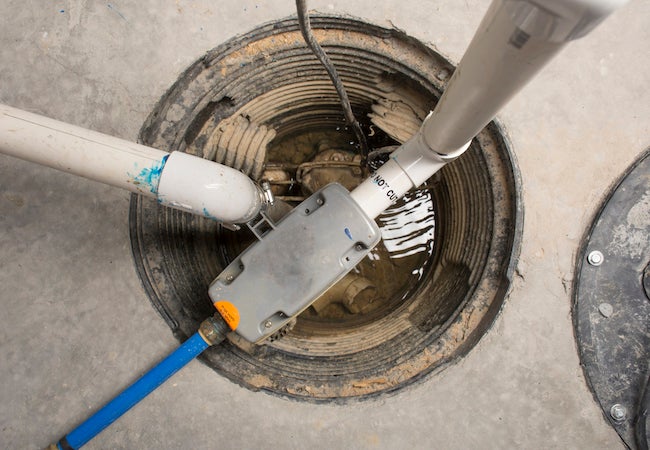Confirmed Methods for Maintaining a Sump Pump
Confirmed Methods for Maintaining a Sump Pump
Blog Article
This great article down the page about How to Care for Your Sump Pump is exceptionally attention-grabbing. You should look it over.

Sump pumps are crucial components in several homes, specifically in areas prone to flooding or extreme wetness. They help avoid water damages by successfully removing excess water from basements or crawl spaces. However, like any other device, sump pumps call for regular maintenance to guarantee they function efficiently when required one of the most. Cleansing your sump pump is a crucial part of its upkeep, and understanding how to do it appropriately can conserve you from pricey fixings and potential disasters.
Introduction
Preserving a tidy sump pump is essential for its appropriate performance and durability. Overlooking this essential job can cause blockages, breakdowns, and ultimately, water damages to your property. Therefore, discovering just how to cleanse a sump pump is vital for home owners that rely upon these devices to maintain their cellars completely dry and secured.
Indicators of a Dirty Sump Pump
Recognizing when your sump pump needs cleaning is essential for avoiding prospective breakdowns. Some typical indicators that show a filthy sump pump include strange sounds during procedure, decreased water circulation, and noticeable particles in the pit. If you discover any one of these signs and symptoms, it's necessary to clean your sump pump promptly to stay clear of any additional problems.
Getting ready for Cleansing
Prior to you start cleansing your sump pump, it's vital to take some safety preventative measures. Start by shutting down the power to the pump to stay clear of any type of electrical accidents. In addition, use appropriate safety equipment, such as handwear covers and safety glasses, to safeguard yourself from dirt, particles, and possible pathogens.
Recognizing the Sump Pump
Before diving right into the cleansing procedure, it's necessary to have a fundamental understanding of how a sump pump works. Typically installed in a pit or container below the cellar floor, a sump pump contains a number of crucial components, including a pump, a float button, and a discharge pipe. When water gathers in the pit, the float button turns on the pump, which then pumps the water out via the discharge pipeline, away from the structure's structure.
Step-by-step Guide to Cleansing a Sump Pump
Shutting down the Power
Begin by separating the power supply to the sump pump to prevent any crashes while cleaning.
Checking for Appropriate Performance
Before re-installing the pump, do a quick test to make certain that the float button turns on the pump appropriately. Pour some water right into the sump pit and observe the pump's operation. If whatever is operating properly, you can rebuild the pump and reconnect the power supply.
Eliminating Particles and Dirt
Utilize a container or a scoop to eliminate any type of visible particles, dirt, or sediment from the sump pit. Dispose of the particles effectively to avoid it from clogging the pump or the discharge pipeline.
Cleansing the Pump and Float Switch
Once the pit is clear of debris, very carefully eliminate the pump from the pit. Examine the pump and the float switch for any indicators of damages or wear. Make use of a soft brush or cloth to clean the surface areas and remove any kind of built up gunk.
Purging the System
After cleaning up the pump and float switch, flush the sump pit with clean water to remove any continuing to be dust or sediment. This will assist make sure that the pump operates smoothly and effectively.
Upkeep Tips to Maintain Your Sump Pump Clean
In addition to regular cleansing, there are numerous maintenance ideas you can follow to maintain your sump pump in optimum condition:
Verdict
Cleaning your sump pump is an important aspect of its maintenance and makes sure that it operates efficiently when you need it the most. By complying with the steps detailed in this guide and including normal maintenance right into your routine, you can extend the life expectancy of your sump pump and safeguard your home from water damage.
6 STEPS ON HOW TO CLEAN A SUMP PUMP PROPERLY
UNDERSTANDING SUMP PUMPS
Your sump pump plays a crucial role in protecting your home by managing and removing excess water. It primarily functions as a “shield”, guarding your basement against the damaging effects of water accumulation. The pump is housed in a sump pit in the lowest part of your basement, and its job is to pump out any water that collects there.
During heavy rainfalls or when snow melts rapidly, water can infiltrate your basement, posing potential risks like flooding, structural damage, and harmful mold growth. Here, the sump pump springs into action, pumping out the intruding water and directing it away from your home.
SAFETY FIRST
Before cleaning, remember to prioritize safety. Disconnect the sump pump from the power source to prevent any accidental electric shocks. Also, wear sturdy gloves to protect your hands from any sharp or dirty components within the pump.
REMOVE THE SUMP PUMP
After ensuring your safety, the next step is to remove the sump pump from its pit. Doing this might require careful maneuvering as you don’t want to damage any pump components. Once removed, clean the sump pit to remove any accumulated debris or sludge.
INSPECT THE PUMP
Inspect the pump for any visible signs of wear or damage. Check the power cord, float switch, and impeller housing. If any components look worn out or damaged, consider replacing them to ensure optimal performance.
CLEAN THE PUMP
Thoroughly clean the pump with warm, soapy water. Make sure to rid it of any dirt, gravel, or other debris that might impede its performance. You can use a toothbrush to clean the small, hard-to-reach parts of the pump.
REINSTALL THE SUMP PUMP
Reinstall the pump into the sump pit Make sure it’s positioned correctly to remove the water effectively Once it’s back in place, reconnect it to the power source TEST THE PUMP
Finally, pour some water into the pit to ensure the pump works correctly. It should start automatically and begin pumping out the water; if it doesn’t, check the power source and the positioning of the pump.
Remember, while cleaning your sump pump is an essential part of home maintenance, hiring a professional plumber for a thorough inspection and cleaning at least once a year is also important. This will ensure that your pump is in optimal condition, ready to protect your home from potential water damage.
BEST PRACTICES FOR CLEANING SUMP PUMP DISCHARGE PIPES
Regular Inspection: Regularly inspect your discharge pipes, especially during heavy rainfall or snowmelt periods. Look for any signs of blockage or damage. Early detection of problems can prevent serious issues down the line. Periodic Cleaning: Over time, sediment and debris can accumulate in the discharge pipes, impeding the flow of water. Regular cleaning helps keep the pipes clear and functioning efficiently. You can use a high-pressure water jet to effectively clean the pipes. Insulation During Winter: In colder climates, discharge pipes can freeze, blocking the outflow of water. Protect your discharge pipes from freezing temperatures by insulating them with foam pipe insulation. This will ensure the sump pump can continue to discharge water even in freezing conditions. Proper Positioning: The discharge pipe should be positioned to direct water away from your home’s foundation. Improper positioning can lead to water seeping back into the basement. Ensure the pipe is long enough and angled correctly. Installation of a Check Valve: A check valve prevents water from flowing back into your sump pit after the pump has pushed it out. Installing a check valve helps maintain the efficiency of your sump pump and reduces the risk of flooding. Minimize Pipe Turns: Every curve or turn in the discharge pipe can decrease the efficiency of water flow. By minimizing turns and bends in your discharge pipe, you can increase the efficiency of your sump pump. https://www.fullspeedplumbing.com/how-to-clean-a-sump-pump-properly9999/

I'm certainly very excited about and I'm hoping you enjoyed the entire entry. Make sure you take a moment to distribute this blog post if you enjoyed it. I take joy in reading our article about How to Care for Your Sump Pump.
Schedule An Appointment Report this page